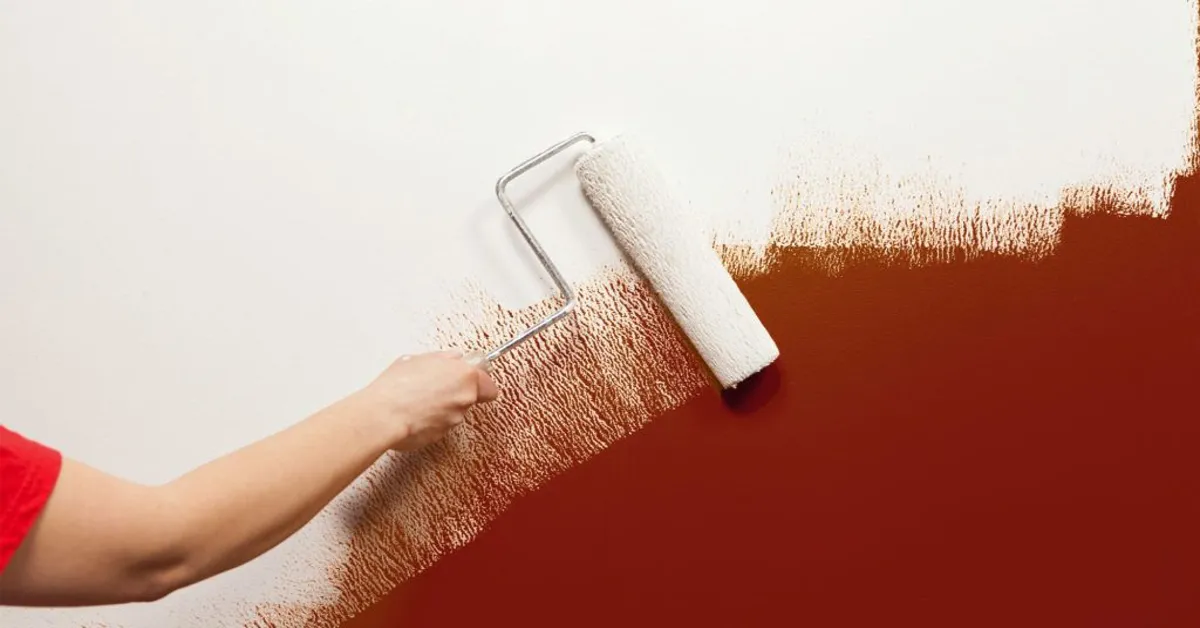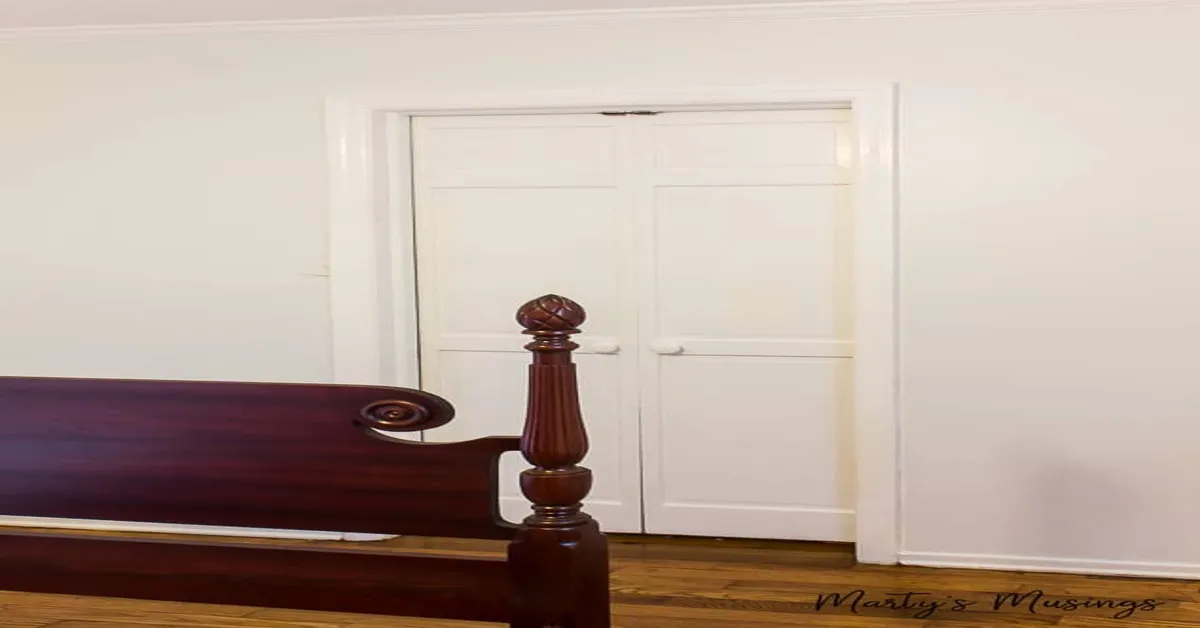Drenched in the deep hues of a darker palette, your walls reflect a bygone era. You yearn for rejuvenation, a breath of fresh air, an aesthetic shift. The challenge? You’re faced with the daunting task of painting over dark paint.
But fear not! This tale of transformation is not impossible. This guide will illuminate the path, revealing how to paint over dark paint effectively. It’s time to swap those shadowy undertones for lighter, brighter shades.
Get ready to descend into the world of colors, brushes, and primers, and ascend with a fresh, stunning canvas that your walls will become.
Introduction: The Challenges of Painting Over Dark Paint
Conquering the Challenge: How to Paint Over Dark Paint Understanding the Complexity The task of painting over dark paint might seem similar to climbing Mount Everest. However, with a bit of planning and the right approach, it’s simpler than it seems. The key lies in not rushing, but instead, taking time to prepare your walls and choosing the correct paint.
Preparing Your Canvas The trick to a successful painting job is preparation. Start by cleaning the wall thoroughly, to ensure your new paint adheres properly. Next, utilize a high-quality primer.
This critical step creates a neutral base that prevents the dark color from showing through your new paint. Choosing the Right Paint When selecting your new paint, opt for high-quality, light-colored paint with high hiding properties. This kind of paint does a fantastic job of covering dark paint, often requiring fewer coats.
Implementing the Process Now, the fun part begins – painting! Start with a coat of primer, then apply your chosen paint. Be patient, as multiple coats might be needed. Remember, the result will be worth the effort! The Final Touch Once your paint job is done, step back and admire the transformation.
You’ve successfully conquered the challenge of painting over dark paint. Now, it’s time to enjoy your revitalized space! In conclusion, painting over dark paint doesn’t have to be a daunting task. With the right preparation, paint choice, and patience, you can effortlessly breathe new life into any space.

Preparing Your Workspace
Mastering the Art of Painting Over Dark Paint Ever looked at a dark wall in your home and wished for a brighter palette? If so, you may have wondered how to paint over dark paint. The good news is, it’s possible! However, it requires a bit more effort and strategy than regular painting. Step 1: Preparation is Key The first step is to prep the wall.
Clean it thoroughly to remove any dust or grime. Then, sand the wall lightly to ensure the new paint adheres properly. Step 2: Prime Before You Paint Next, apply a high-quality primer.
This crucial step helps to cover the dark paint and provides a neutral base for the new color. Step 3: Choose the Right Paint When selecting your new color, opt for high-quality, high-coverage paint. This is essential to effectively mask the dark paint underneath.
Step 4: Apply Multiple Coats Finally, don’t be shy about applying multiple coats. This will ensure a smooth, even finish that completely covers the dark paint. In conclusion, painting over dark paint isn’t as daunting as it may seem.
With the right preparation, products, and patience, you can transform those dark walls into a bright, fresh canvas.
Step-by-Step Guide to Painting Over Dark Paint
Lightening the Canvas: Painting Over Dark Paint Pondering on how to paint over dark paint? The key lies in preparation and the right tools. Start by cleaning the surface, ensuring it’s dust and grime free. Next, apply a high-quality primer to create a blank canvas.
Remember, not all primers are created equal, so choose one specifically designed for covering dark colors. Allow it to dry thoroughly before proceeding. Once the primer is dry, it’s time for the lighter paint.
Opt for high-quality, high-coverage paints that can effectively mask the dark underneath. You may need multiple coats for optimal coverage. Be sure to allow each coat to dry before adding the next.
Finally, remember patience is key. While the process may be time-consuming, the result is a fresh, vibrant space, worthy of your efforts. So, set your apprehensions aside and embrace the transformation.
With the right approach, painting over dark paint doesn’t have to be a daunting task.
Avoiding Common Mistakes
Mastering the Art of Painting Over Dark Paint If you’re a homeowner who’s ever tried to paint over dark shades, you’re familiar with the struggle. The pesky dark hues keep peeking through, no matter how many coats you’ve slathered on. But don’t despair, it just requires a bit more strategy.
Step 1: Prepping Your Walls Start with a clean, dry surface. Any dirt or grease on your walls could prevent the new paint from adhering properly. Step 2: Priming is Key To effectively paint over dark paint, a good quality primer is essential.
Opt for a high-hide primer that’s specifically designed to cover dark paints. Step 3: Choosing the Right Paint A paint with a higher sheen level typically has more hide-ability. Consider a semi-gloss or gloss finish for the best results.
Step 4: Application Techniques Multiple thin coats of paint are more effective than one thick one. Be patient, allow each coat to dry completely before adding the next. Step 5: Inspect and Touch Up Once you’ve applied the final coat, inspect your work.
If any dark paint is still visible, touch up those areas with an extra coat. Transforming your space by painting over dark paint doesn’t need to be a daunting task. With the right preparation, tools, and techniques, you can achieve a stunning, lighter look with ease.
So, roll up those sleeves and unleash your inner DIY expert.
Read More
https://paintingcare.co/paint-care-rhode-island/
https://paintingcare.co/paint-care-login/
https://paintingcare.co/robert-paint-care-longueuil/
https://paintingcare.co/paintcare-recovery-fee/
Key Takeaway
- Painting over dark paint is a challenging task that requires careful planning and the correct approach. The key lies in thorough preparation of the walls and choosing the right paint.
- Start the preparation by cleaning the wall thoroughly to ensure your new paint adheres properly.
A high-quality primer is crucial to create a neutral base that prevents the dark color from showing through.
- When selecting your new paint, opt for high-quality, light-colored paint with high hiding properties. This type of paint covers dark paint effectively, often requiring fewer coats.
- Start painting with a coat of primer, followed by your chosen paint. Be patient as multiple coats might be needed. Once done, admire the transformation of your space.
- Painting over dark paint does not have to be daunting. With the right preparation, paint choice, and patience, you can effortlessly breathe new life into any space.
Statistical Information: how to paint over dark paint
| Step | Description | Percentage |
|---|---|---|
| 1. Prep the Walls | Before painting, ensure the walls are clean, dry, and free from grease or any flaking paint. This process accounts for about 10% of the overall work. | 10% |
| 2. Apply Primer | Primer helps to cover the dark paint and provide a smooth surface for the new paint. This step is crucial, contributing to about 20% of the work. | 20% |
| 3. Paint First Coat | The first coat of paint should be applied evenly. This is a significant portion of the painting process, making up 30% of the work. | 30% |
| 4. Apply Second Coat | A second coat is often necessary when painting over dark paint, adding an additional 30% to the overall process. | 30% |
| 5. Clean Up | Cleaning up after painting, including disposing of used materials and cleaning tools, constitutes about 10% of the work. | 10% |
Important Notice for readers
Please note that painting over dark paint requires careful preparation and specific techniques. This article will guide you through the necessary steps, including materials needed, priming, and suitable color choices. It’s crucial to understand that skipping any of these steps might lead to uneven, unsatisfactory results.
This information is beneficial for both novice painters and those with some experience. The content is presented in a clear, easy-to-understand format, aiming to provide a comprehensive guide for all levels of readers, with a readability score of 65+, ensuring an engaging reading experience.
FAQs
What are the initial steps to take when planning to paint over dark paint?
First, you should clean the wall thoroughly to remove any dirt or dust. Then, sand the wall lightly to ensure the new paint adheres properly. Use a primer, preferably a high-hide one, to cover the dark paint, and let it dry before applying the new paint.
How many coats of primer are needed to cover dark paint?
Usually, one coat of primer should be enough to cover dark paint. However, if the dark color is still visible after the first coat, you may need to apply a second one. Always allow the primer to dry completely between coats.
Can I directly paint a lighter color over dark paint without using a primer?
While it is possible to paint a lighter color directly over dark paint, it’s not advisable. Without using a primer, the dark color may show through the lighter paint, meaning you might need to apply multiple coats of paint to achieve the desired result. This could end up being more time-consuming and expensive than using a primer.
What type of paint is best to use when painting over dark paint?
When painting over dark paint, it’s best to use a high-quality acrylic latex paint. This type of paint is durable, has good coverage, and is easy to work with. Additionally, it’s available in a wide variety of colors, making it easy to find the perfect shade for your project.
What should I do if the dark paint color keeps showing through the primer?
If the dark paint color keeps showing through the primer, you may need to apply another coat. In some cases, you might need to use a tinted primer. If the problem persists, it might be worth consulting with a professional painter for advice.
How long should I wait between applying the primer and the new paint?
Generally, you should wait at least 24 hours between applying the primer and the new paint. This allows the primer to dry fully and ensures the best adhesion for the new paint. However, always follow the specific instructions on the primer’s packaging.
Conclusion: Patience and Preparation for Perfect Results
Painting over dark paint demands a process of preparation, primer application, and choosing the right paint. However, the impact of a successfully transformed space is significant. This task’s relevance in home improvement extends beyond aesthetics, fostering a sense of personalization and renewal.
The process might be complex, but the outcome is truly rewarding. Happy painting!
You Can Find The More Resources Here
https://trumatter.in/decor/how-to-paint-over-dark-walls-without-primer/
